On Thursday I returned from a 19-day trip to Taiwan. It was a fabulous trip in all manner of ways, and not least in terms of dark tourism. The material I gathered on this trip will provide content and photos for several new Blog posts and a few dozen new and/or expanded chapters for my main website.
I took thousands of photos and it will take me weeks to develop all the files in RAW format and process them. So here’s just a little pre-teaser with images taken only by smartphone, so not the best quality, but hopefully good enough for a first impression.
The dark-tourism subcategories covered on this trip included first of all the long years of martial law and dictatorship under Chiang Kai-shek, who had fled the Chinese mainland with his nationalist Kuomintang (KMT) when they were losing against Mao Zedong’s communists in the Chinese Civil War in 1949. In Taiwan, Chiang then set up an exile government which claimed to stand for all of China (very much in contrast to the actual new realities). Chiang ruled with the proverbial iron fist and his regime was characterized by a veritable cult of personalty. This is still very much in evidence even decades after the dictator’s and his regime’s demise and Taiwan’s turn towards democracy. In the capital Taipei, for instance, stands an over-the-top Chiang Kai-shek Memorial Hall, whose centrepiece is this giant statue of a sitting Chiang with that characteristic pseudo-benign grin on his face:
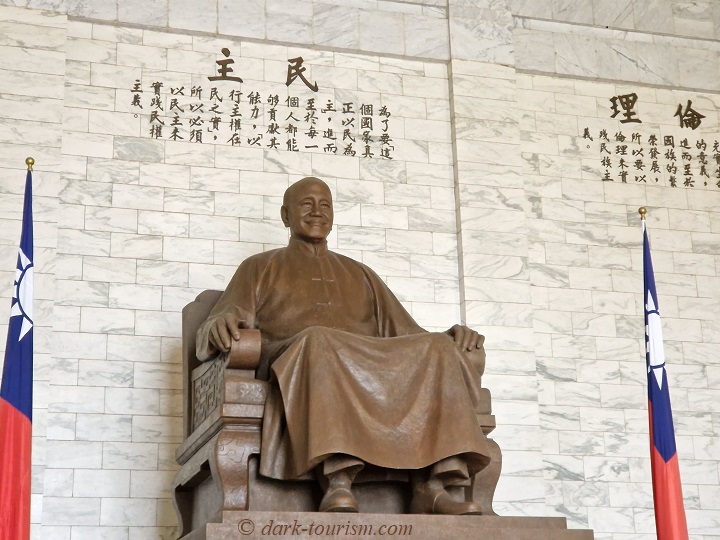
During Chiang’s rule, such statues, albeit on a generally smaller scale, could be found almost everywhere. Every administrative building and every school had to have a Chiang statue or bust. After the end of the dictatorship and the introduction of proper freedom and democracy, all those statues naturally became rather unloved in many cases. And so it came that hundreds of institutions “donated” their Chiang statues to a memorial park next to Chiang’s mausoleum … i.e. they dumped them there. These amassed Chiangs now form the Chiang Kai-shek Statue Park, one of the most bizarre sights to behold in Taiwan today. Here’s just a small sample of the densely packed rigid Chiangs spread out over the park:
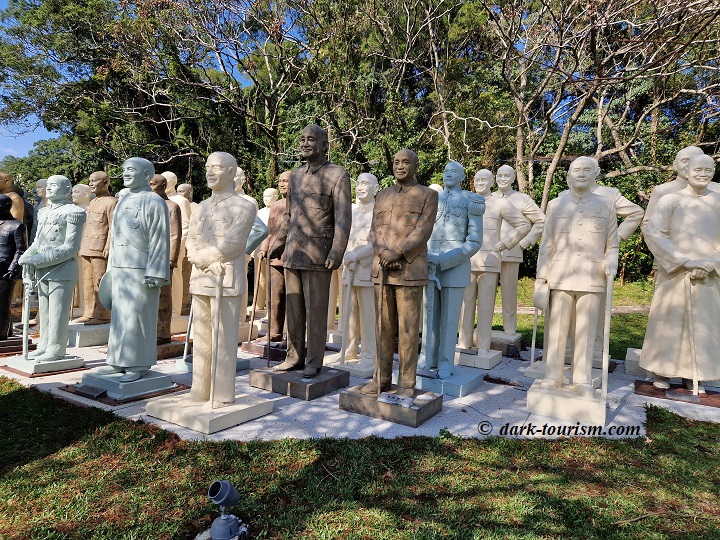
These weird vestiges of the Chiang cult of personality contrast starkly with the really dark sites related to his dictatorial rule, which is usually referred to as the “White Terror”. The largest and grimmest such sites are to be found on Green Island off the south-eastern coast. This is where the main prison for dissidents, communists and other political opponents to the regime was. They were sent there for “re-education” and forced labour. The photo below shows a cell block complex dating back to 1970 that was given the Orwellian name of “Oasis Villa”:
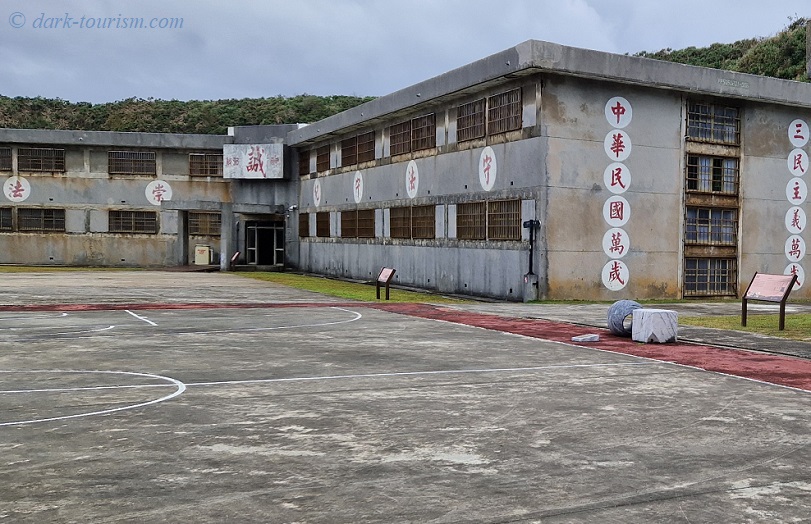
There were other such political prisons too, including in the capital Taipei. And one was preserved as the “Jing-Mei White Terror Memorial Park” as part of the National Human Rights Museum. This includes cell blocks too, and here’s an image from one of its grim corridors:
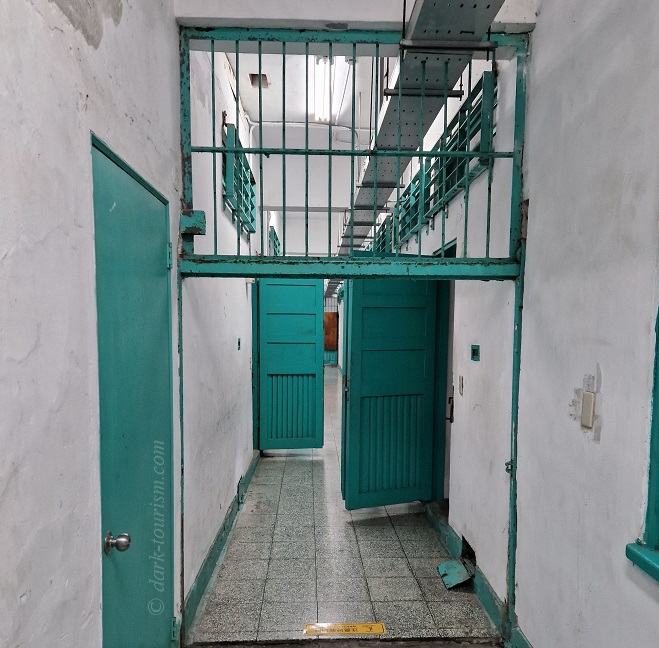
The prison subcategory of dark tourism continues beyond those political detention centres. In Chiayi City, for instance, a former prison from the Japanese colonial era has also been preserved as a memorial site. Here’s one of its cells, which has been recreated to show what it may have looked like when it was still in use:
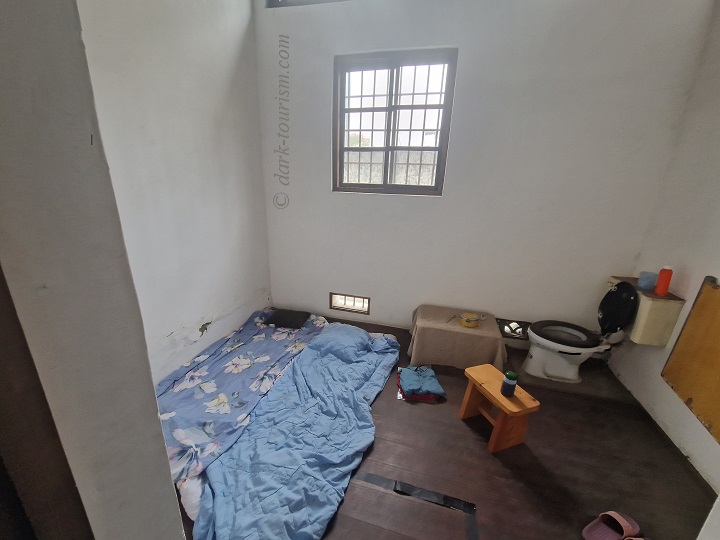
During WWII, Japan also used Taiwan for several POW labour camps to which it sent captured Allied soldiers (cf. Death Railway or Hashima), mainly British, American and Australian. At the former Kinkaseki POW camp, a memorial complex has been set up, which features this double POW statue:
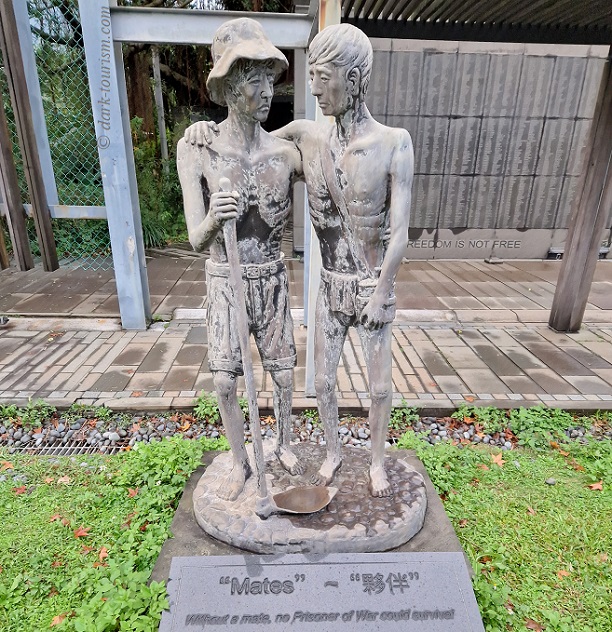
Also linked to Japan, but in a very different way, is the memorial for Taiwanese who served in the Japanese military during WWII. This is located on the island of Cijin in the southern port city of Kaohsiung:
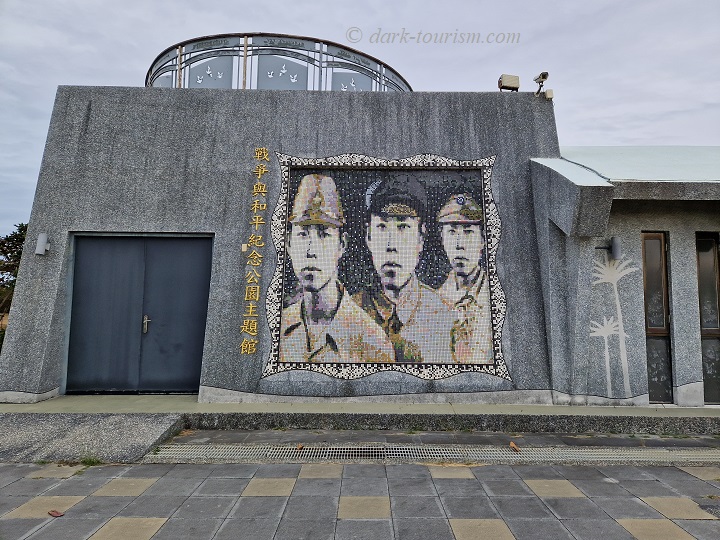
After WWII and the establishment of Taiwan as the “Republic of China” under Chiang Kai-shek, military confrontation shifted towards the outlying islands that form part of Taiwan but are actually located just a few miles off the Chinese mainland. Of particular interest from a DT perspective is Kinmen. Up until well into the late 1970s, both sides continued shelling each other as well as blaring out propaganda messages (through giant loudspeaker stacks) across the short distance between these Taiwanese islands and China. Vestiges of the shelling can still be found today, e.g. in this bullet-hole-riddled war ruin known as the Beishan Old Western-Style House (so named because the architecture blended in some 19th century European styles):
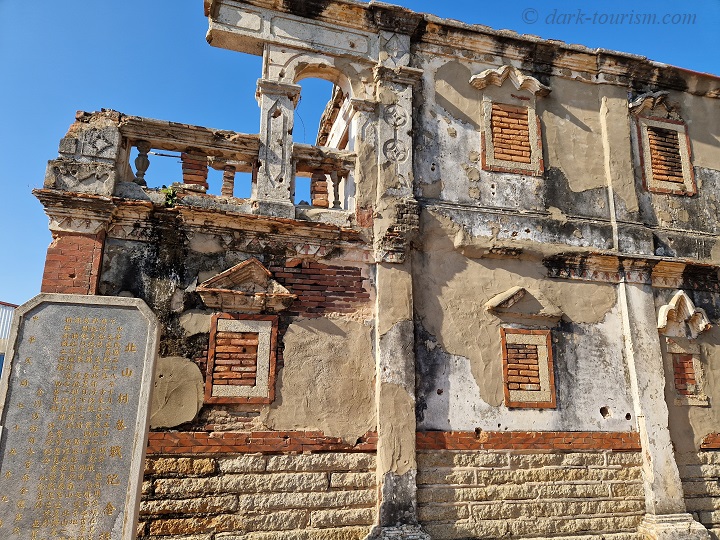
From the western shores of Kinmen you can look across the water to the nearby mainland Chinese coastline, where modern skyscrapers have risen up in the city of Xiamen:
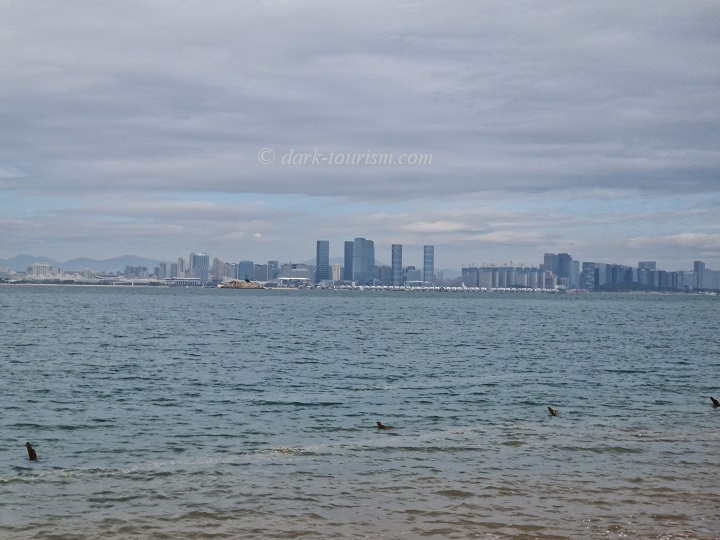
Note those black objects in the water in the foreground – these are anti-amphibious-landing spikes driven diagonally into the shoreline. At low tide you can see rows and rows of these all along the beaches facing the mainland.
Because of the constant shelling, the military dug into the underground on Kinmen. Several tunnels were driven into the rock to allow supply barges to unload in safety from the shelling, such as this one at Zhaishan, which has since become one of Kinmen’s prime war-related tourist sights:
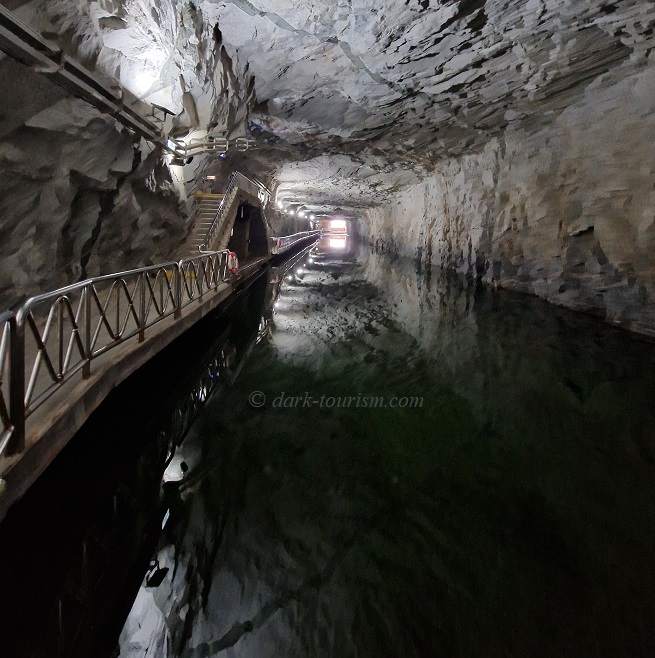
Not just the military dug in on Kinmen. Much of civilian life was also forced to go underground (and civilians were not allowed to leave the islands, as the regime feared that this would result in a depopulation of Kinmen). One vestige of this is the civil defence tunnel system at Qionglin, which has also been made accessible to tourists:
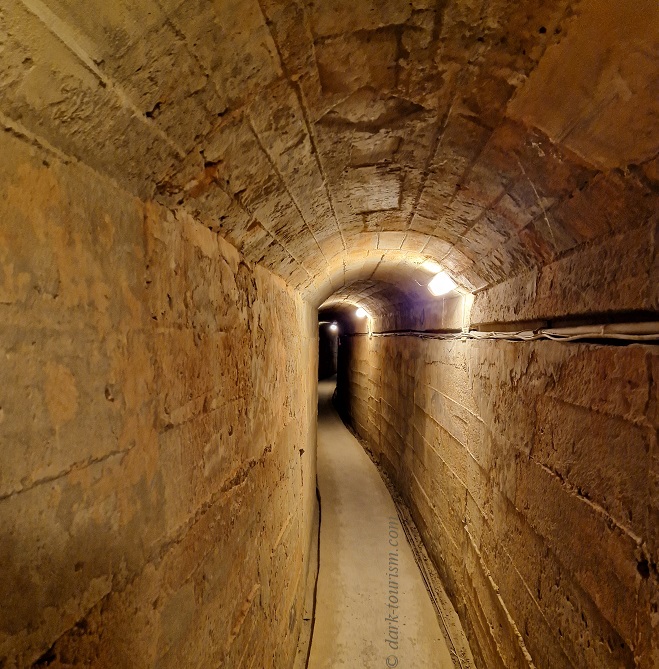
In fact, military and war-related sites dominate Kinmen’s tourism portfolio. I visited some two dozen such sites in just two full days! And to top it all off, for my three nights on Kinmen I stayed in a war-themed tourist hotel. This is what my room looked like:
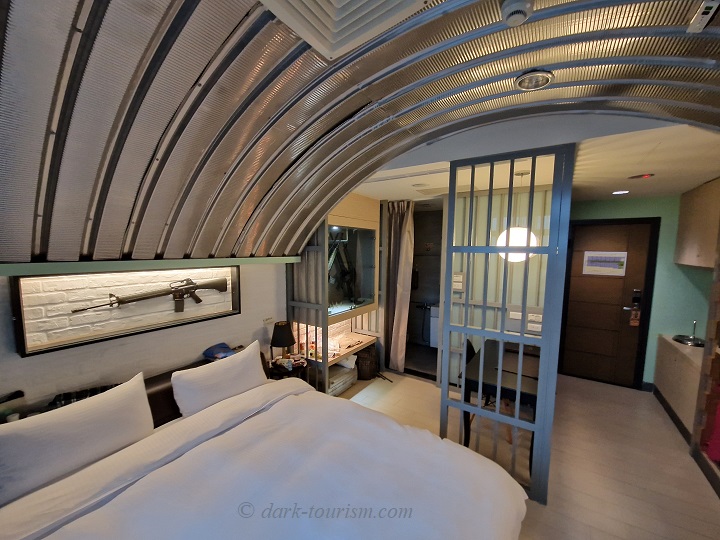
Back on the main island of Taiwan, another dark-tourism category that was included in my itinerary was disaster-site tourism. Not only does Taiwan frequently get battered by typhoons, causing much damage not just from strong winds but also flooding and landslides (which regularly cut off roads and railway tracks), but it is also exceptionally earthquake-prone. They say the country experiences something like 10,000 earthquakes a year, mostly minor ones, but every four decades or so a real biggie hits. Last time this happened was on 21 September 1999 with a 7.7 magnitude quake. This caused irreparable damage to well over 10,000 buildings and left some 2400 people dead. The disaster is commemorated at the dedicated 9-21 Earthquake Museum (the numbers are the date in the American style). This incorporates the ruins of a school that was totally destroyed by the quake (luckily the disaster struck in the middle of the night, so no pupils were harmed – it could have been so much more catastrophic had the quake occurred during school hours). It’s quite a shocking sight to behold:
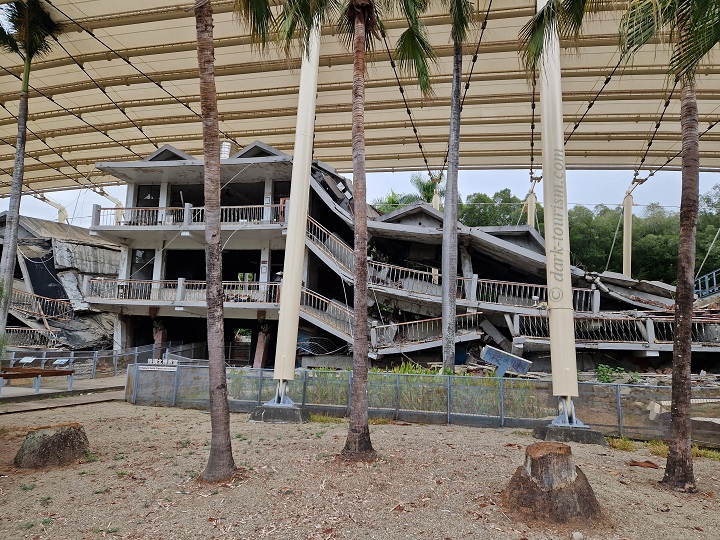
Near the epicentre of the quake in Jiji, there’s a similarly photogenic earthquake ruin, namely that of a temple whose ground floor was largely pancaked, thus bringing the roof and its elaborate decorations closer into view when you stand in front of it (same photo as the featured one at the top of this post):
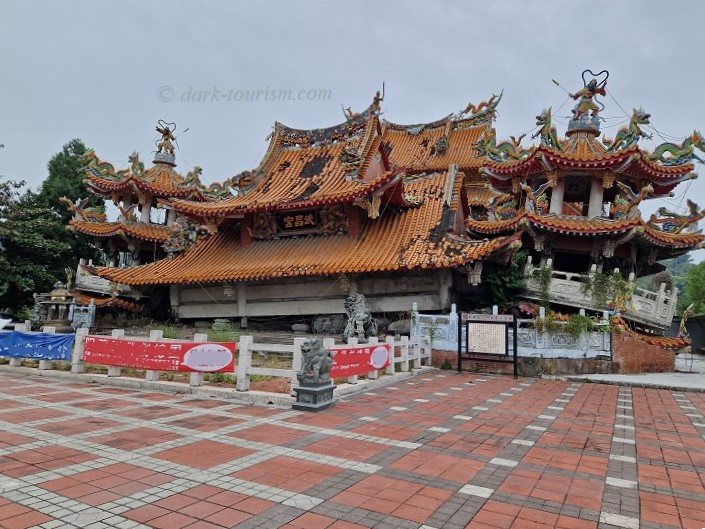
Ruins brought about not by a disaster but simply by neglect are these abandoned Futuro Houses on Wanli Bay in the north of Taiwan:
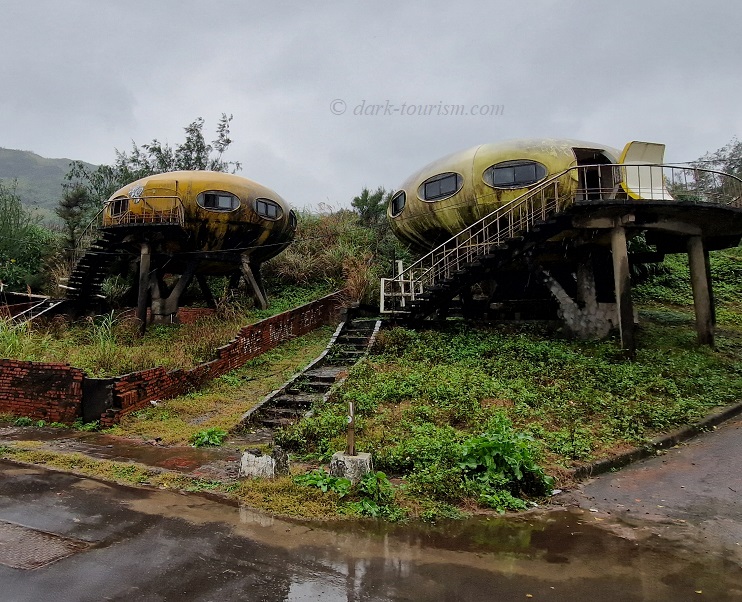
Futuro Houses were a Finnish design from the late 1960s, and these at Wanli were built sometime in the early 70s. There are several of these UFO/flying-saucer-like pods within a cluster of similarly retro-futuristic Venturo Houses by the same Finnish designer, together forming a kind of ex-holiday park, which is now largely abandoned (I spotted only one inhabited Venturo House). It was possible to enter one of the Futuro Houses to get a glimpse of the interior:
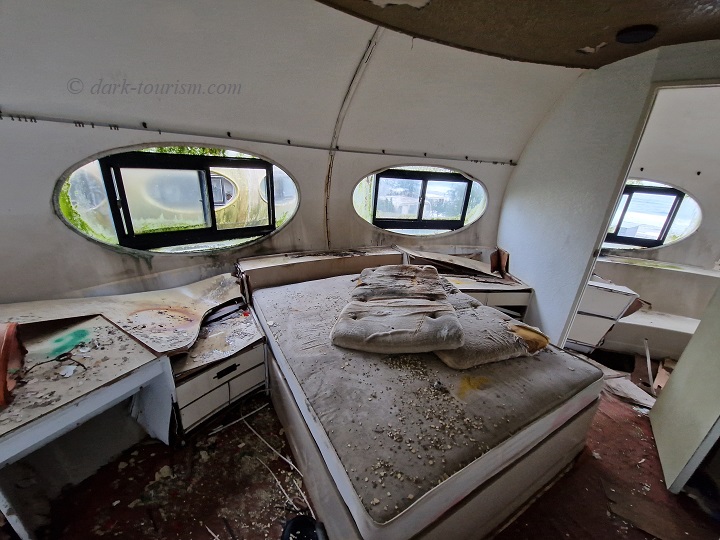
There were two small bedrooms, a kitchen and dining area, and a bathroom. Some of the household appliances were still in place, as were most of the furnishings. It was somewhat damaged but not as totally trashed as some of the other houses I saw in the Wanli park. I would love to have seen them when they were brand new and still intact, and wouldn’t have minded staying a night or two in one of them. But they clearly proved unpopular and were left to fall into ruin. Shame. But it gives the urbexers amongst us dark tourists a special treat – there aren’t many Futuro Houses left and this cluster in Wanli is said to be the largest in the world.
Close by waited another urbex delight: a whole abandoned hotel. It was easy to enter and explore the interior. Here’s a photo of what once was the grand atrium of the hotel:
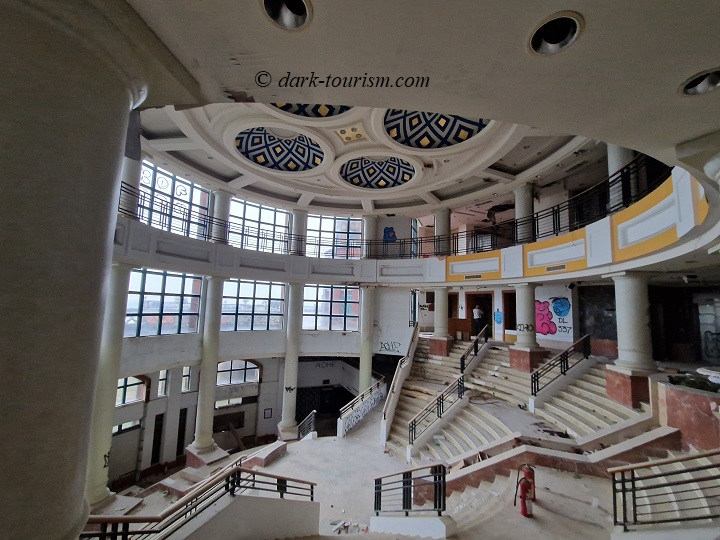
Northern Taiwan also features plenty of industrial ruins from the days of coal mining and a gold rush. All mining operations have long ceased, and some sites have been turned into tourist attractions (such as the Gold Museum) … others are just abandoned and partially in ruins, such as these vestiges of a gold purification plant:
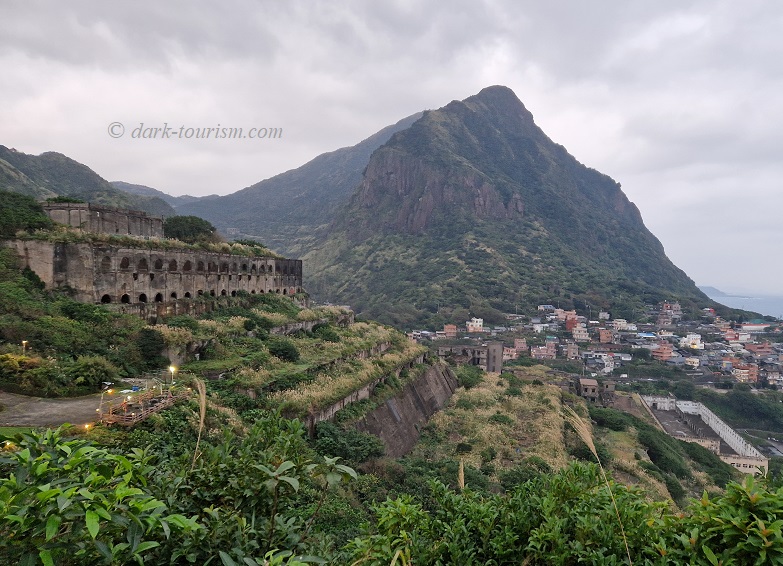
These ruins could not be entered though, they are fenced off and entry is forbidden because of the heavy contamination with toxic chemicals (e.g. with arsenic). So it’s not quite urbexing. But they looked stunning enough from the outside.
And one final photo for this post:
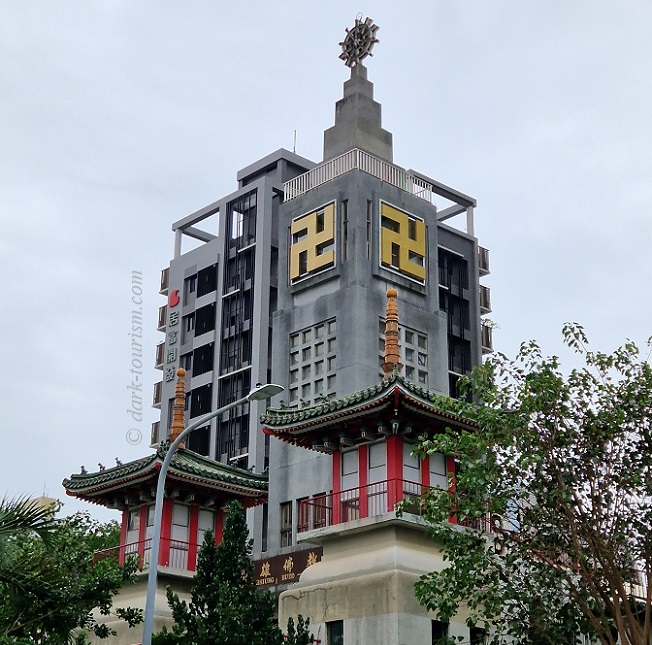
What’s this? Nazis in Taiwan?!? … No, of course not. The straight swastika (as opposed to the 45-degree tilted version used by Nazis) is a totally innocent symbol in Buddhism. For example it’s also used to mark vegetarian restaurants! (Of which Taiwan has plenty – never ever anywhere else in the world did I feel so well catered for!)
But a photo with swastikas like this could have landed me in trouble if posted on Facebook – if I hadn’t already been purged from that platform anyway, that is (full story here). Similarly, an e-friend of mine used to run a page on FB called “reclaiming the swastika” on which he posted plenty of images of Buddhist temples like this one featuring swastikas. But because FB’s stupid algorithms cannot differentiate, the page was also closed down. This is one of the reasons why my confidence in AI bringing about something positive is pretty close to zero … but I’m drifting off-topic.
I’ll bring this post to a close now – but can promise plenty more dark-tourism-focused posts about specific sites in Taiwan over the next few months (as well as other, non-Taiwan-related ones again as well). Just bear with me. As I said, first I have loads of photo processing work ahead of me.

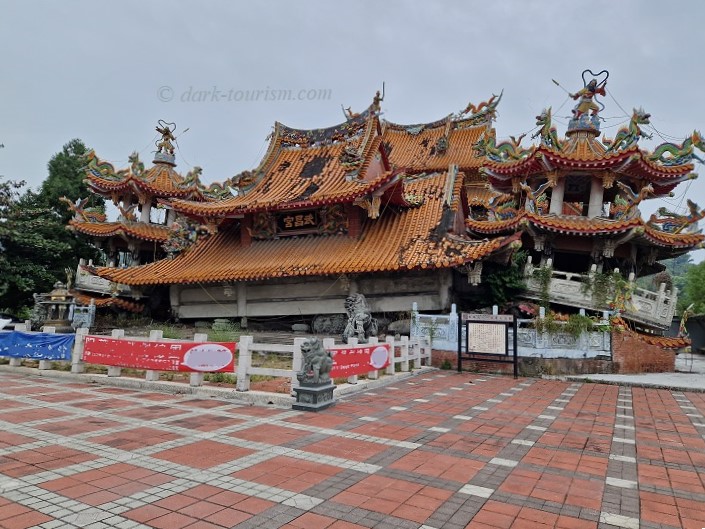



2 responses
I stumbled upon a website called Atlas Obscura a few years ago. It has unique, quirky and abandoned places all over the world. I saw a listing for those Futuro homes on there. Check that site out. It’s not dark tourism but you might find it interesting.
I am very aware of Atlas Obscura – it may well have been where I first saw those Futuro Houses. And they do cover a fair bit of dark tourism sites. So it’s a regular reference for me. Their entries are just often not very well curated. The Futuro Houses are a notable exception, though. very well covered, not just the Taiwanese ones …